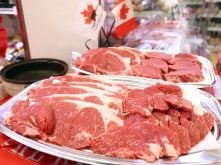The federal government has announced it is ready to roll out two previously announced funding programs aimed at helping packers deal with added costs associated with disposal of specified risk materials.
SRMs are those animal parts believed to be most at risk for spreading BSE.
“This is great for the industry,” Jim Laws, executive director of the Canadian Meat Council representing federally registered packers, said July 8.
Last week, Ottawa announced that applications now are being accepted for two programs announced in the March 2010 budget that tap into the $500 million AgriFlexibility fund.
Read Also

More factors affecting winter weather
When you combine a weak La Niña, early Siberian snow, and a warm northern Pacific, it’s easy to see why long-range winter forecasting is so complex.
The Abattoir Competitiveness Program is a $25 million fund to help packers cover SRM removal and disposal costs that are higher than in the United States. It is available to plants that continue to maintain significant processing levels of cattle older than 30 months.
Laws said the one-year program appears to be a grant rather than a loan as it first appeared from budget documents. “This is pure money and that is welcome.”
He said it will pay out 55 cents per kilogram of SRM material for plants that maintain older animal processing near 2009 levels.
“We want Canadian cattle to stay in Canada for processing.”
It is a companion to a $10 million interest-free loan program to help expand slaughter capacity for older animals.
The $40 million, three-year Slaughter Waste Innovation Program will make loans available to companies or researchers developing technologies or systems that either make SRM removal more efficient and less costly or provide a way to add value to SRM disposal.














